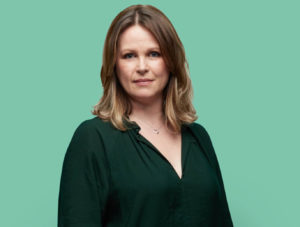Today’s interview is with a marketer who’s been at the vanguard of innovation in B2B since before terms like “Social Media” or “MarTech” even existed. A marketer who lectures worldwide on topics relating to CMR, lead generation and marketing integration and has shaped the strategies of many of the world’s largest brands. That marketer is Shane Redding.
Shane, thank you so much for joining us.
Transcript
We have a tendency in the digital world to behave as if we invented marketing as it is today. Now, from your perspective, how new do you believe the fundamental principles of data-driven marketing are? Is this something that has emerged within the last 10 years?
Shane: No, absolutely not. It’s actually something that makes me very cross, because I believe that the principles of excellent digital marketing lay back in good old data and database marketing, which was certainly evolving and around in the 1980s (there we are, I’ve dated myself for everybody listening to this).
So, if you are following best practice, these principles are still absolutely fundamentally the same: testing, experimentation, the holy grail of the single customer view and using data & digital channels brilliantly to create amazing personalised experiences.
So, if you are following best practice, these principles are still absolutely fundamentally the same: testing, experimentation, the holy grail of the single customer view and using data & digital channels brilliantly to create amazing personalised experiences.
Dan: A similar question, in a sense: to what degree do you believe MarTech is currently overhyped? Again, I feel there’s quite a lot of circumstances where technology is used that has been around for quite a long time and is actually quite rudimentary, it’s just the application that’s new – but that might be an unfair generalisation. I’d like to know your perspective on that.
And if there’s one area of MarTech that you feel really has the potential to alter the way that marketing functions are operated over the next few years, what might that area be?
Shane: Let’s start with the: “Is MarTech overhyped?” I’d say perhaps it’s just brilliantly marketed. Some of the best marketers in B2B work for these vendors, and they have done the most fantastic job of creating categories of things we didn’t know we needed. And let’s face it, most of us who are marketers like the bright, shiny and new. So we have only ourselves to blame, I think.
Over 9,000 different applications in the MarTech landscape, we have so much choice, but I think the point you made about description is really interesting. Banding around words like “Machine Learning” and “Artificial Intelligence”, again I’m a marketeer – be it a data-driven marketeer – but I am not a scientist by background. I am lucky enough to work with proper scientists (and we’re talking in some cases, rocket scientists) and they get very cross with some of the liberties that we take in marketing and sales with adopting some of the language for our own ends, and they are not proper scientific definitions. So, there’s definitely a stretching of what really is underlying these technologies in some cases, in fact, probably in most cases. So, it’s definitely a question of buyer beware. What exactly are you getting from some of this tech.
With regards to the future and the real hotspot in MarTech at the moment, it’s all about integration.
Now, with regards to the future and the real hotspot in MarTech at the moment, it’s all about integration. I am lucky enough to moderate and speak at conferences around the world, and there’s a consistent theme – particularly in B2B marketing, but wider than that – about how we need to integrate our data and we need to integrate our systems, and it’s a category that is probably now one of the hottest; there’s starting to be some market leaders here, so watch that space.
Dan: That’s really interesting. Whether it’s that particular form of MarTech or other transformations that marketing functions need to work through, there is often a prevailing rationale that before companies adopt these new technologies or the way in which they use these technologies, they first of all need to go back a step and challenge the underlying systems and processes at their most basic. But with a constant and seemingly never-ending flow of new technology, how do companies avoid ending up in a perpetual state of never-ending wholesale transformation?
Shane: I don’t think we should avoid it. I think they’ll be dead, otherwise. We all need to constantly transform ourselves; if anything, the last period of change has shown us that more than ever. I passionately believe that we have got to embrace transformation; we’ve got to look at better ways of doing things – the whole time.
We all need to constantly transform ourselves; if anything, the last period of change has shown us that more than ever. I passionately believe that we have got to embrace transformation; we’ve got to look at better ways of doing things – the whole time.
I think there are two ways of doing this: the always-on, ‘Team Sky’ approach, looking for 1% improvements everywhere. If everyone in an organisation can make a 0.5% or 1% difference, that adds up to a huge amount of change. I think the days of big transformational cultures – there are still some companies that are doing it – are a bit old fashioned, because, by the time you get there, the future is not the same. So, perhaps this is not the way to go, but that agile approach that looks for better ways to fix things that aren’t working internally, and absolutely looks for better ways to help customers buy, is really important.
Dan: So, a slightly different topic, but still related: we’ve seen the productisation and digitisation of B2B propositions, particularly at low price points, but less so at higher price points. Is that because higher value items simply cannot be sold without a strong human dimension, or are there other barriers preventing that transition?
Shane: I believe there are fundamental embedded cultural barriers to change – particularly to moving toward E-commerce for B2B – and I think the biggest one is traditional, legacy organisations where the power base lies with sales. The Sales Director is on the board but maybe the Ops Director of the Marketing Director isn’t. And I think that’s a hard thing to change, because you’re actually asking someone to divert their budget and instead of the traditional: “We need more people”, actually, we need less people but better ways of doing things.
I believe there are fundamental embedded cultural barriers to change – particularly to moving toward E-commerce for B2B – and I think the biggest one is traditional, legacy organisations where the power base lies with sales.
Massive change also in terms of the customers and what they want, and I think some businesses have been slow to hear that. So, this is embedded, this is the way we’ve always done it, but there’s a lack of understanding that the buyer has changed.
But I think we also have to be very honest with ourselves and reflect that often in our organisations maybe we lack the skills to do this. It’s scary. This is an absolute organisational change, but we can do it now, and we can do it in a very low-risk way. We can test, we can go in and just take one area and try it and expand out. So, there are a lot of reasons that are meaning that we’ve been a little slow to this, but on the other side, I’m super excited about the emergence of some other trends – that we haven’t yet talked about – in particular this convergence of B2B and B2C, where we’re no longer talking about separate worlds, but the best of both bleeding together. And that includes e-commerce and learnings from that.
I’m super excited about the emergence of some other trends, in particular this convergence of B2B and B2C, where we’re no longer talking about separate worlds, but the best of both bleeding together.
I think also the world of low and no code means you can set up experimentation without having to do massive IT projects. I had one small startup that got international payments set up on their website for cybersecurity in three days. That’s what we have to recognise. Those people are doing it and they are doing it now.
And the last, which is super exciting and really does help us move in this direction, is the emergence of a strong marketing operations function that can really define what an excellent digital sales process is.
Dan: Is there a danger that if companies try to excessively digitise or exclusively digitise their proposition and remove that human element, that you fundamentally undermine the customer experience?
If the customer knows this stuff is super cheap to produce, they won’t necessarily attach the same significance to it. Do you think that could be a perceived barrier as to why companies believe that if they were to shift their offering entirely to digital that they might eliminate some of that perceived meaning?
Shane: That’s a really interesting question. I mean, is anybody shifting today to a completely digital approach? No. But what I think it means is that you can use the digital stuff to actually create better-personalised experiences than a human could ever do.
But what I think it means is that you can use the digital stuff to actually create better personalised experiences than a human could ever do.
This goes back to this challenge of having a single view of the customer, which if you’ve got a customer data platform, you genuinely know everything about that individual that is visiting you online and you can give them the best experience. If you haven’t got that, maybe you’re working in a call centre and you’re just seeing that one touchpoint, you can’t give as good a personalised experience. You’re just seeing your siloed view.
So, I think it’s about getting that message out about using the best both. And I think you mentioned it brilliantly: the scalability, all the money is pouring in from VCs into businesses that can scale, it’s the holy grail of recurring revenue – particularly in B2B – but actually, the ones who are doing better are the ones who are not just investing in that tech, but investing in the people to give amazing experiences. And I think that’s really interesting.
The ones who are doing better are the ones who are not just investing in that tech, but investing in the people to give amazing experiences.
The SaaS companies with a three-box model on pricing – you know, most will click the middle button – have an onboarding experience that is part digital and part human. There’s a sales engineer who customises the technology for you and your company, who gets a data alert on their dashboard to say no users have checked in for the last 30 days. That’s a big flashing red light: if they’re not using it, they’ll probably cancel. So, it’s the two together that are absolutely accelerating.
Dan: That’s awesome. Shane, thank you so much for this. It’s been fantastic and I feel like you’ve certainly made me challenge a few of my preconceptions which is always a good sign, so thank you. Really appreciate your time.




